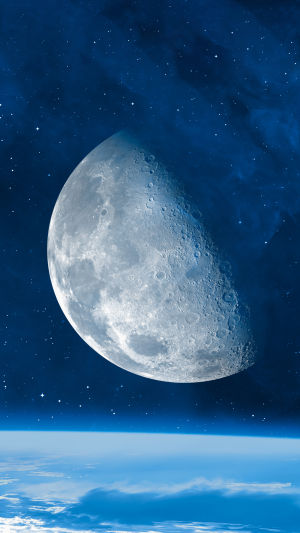On this historic day in 1969, America's "Apollo 11" made its monumental landing on the moon, forever leaving a mark on human history.
Astronaut Neil Armstrong took humanity's first steps on the lunar surface, imprinting human footprints and inaugurating July 20 as Human Moon Day. This significant event not only symbolized a giant leap for mankind but also sparked a profound curiosity about our closest celestial neighbor - the moon.
As Earth's only natural satellite, the moon holds a unique position in our cosmic neighborhood. It is believed to have formed approximately 4.5 billion years ago, shortly after the birth of our planet.
Numerous hypotheses exist regarding its origin, but the prevailing theory suggests that the moon materialized from the aftermath of a colossal impact when debris from a massive collision accumulated around Earth's periphery.
Advancements in science and technology have contributed to a more comprehensive understanding of the moon over time. As Earth's fifth-largest satellite, it maintains an average distance of about 380,000 kilometers from our planet.
Structurally, the moon consists of a core with a radius of 700 kilometers, a mantle with a radius of 1000 kilometers, and a crust measuring 70 kilometers in thickness, resembling Earth's composition.
Devoid of an atmosphere, the moon's surface endures frequent bombardment from various celestial bodies, resulting in the formation of a layer of lunar soil, typically 3 to 20 meters thick.
Radiating as the brightest and largest celestial body in our night sky, the moon exerts a stabilizing influence on Earth's rotation, ensuring a relatively steady climate and fostering a habitable environment on our planet.
Remarkably, the moon maintains synchronous rotation with Earth, meaning it takes the same amount of time to orbit our planet as it does to complete a rotation on its axis. Consequently, the moon perpetually presents the same face to Earth, while the far side can only be observed through spacecraft.
In modern times, the utilization of astronomical telescopes allows people to observe captivating and intriguing celestial phenomena such as moon phases, lunar eclipses, supermoons, blood moons, and conjunctions.
Moreover, the moon remains a focal point for human space exploration and scientific research. Since the Apollo missions, humans have embarked on numerous unmanned and manned lunar expeditions, expanding our knowledge of this enigmatic satellite.
The lunar surface is adorned with countless craters and volcanic plains, the most extensive being the South Pole-Aitken Basin on the moon's far side, spanning approximately 2,500 kilometers in diameter. These geological features provide evidence of past volcanic activity.
Despite lacking the plate tectonics and extensive crustal movements observed on Earth, the moon exhibits some geological activity. Moonquakes, caused by the moon's interior gradually cooling and contracting, offer valuable insights into its internal structure.
Previously believed to be arid and devoid of water, recent research has unveiled the possibility of water ice existing on the moon's surface. This valuable resource primarily resides in permanently shadowed regions near the moon's poles, some of which is thought to have resulted from meteorite impacts.
Driven by a ceaseless curiosity, humanity continues to pursue lunar exploration, building upon the achievements of the Apollo era. Numerous countries and private enterprises are currently planning and executing a diverse array of unmanned and manned missions to the moon, with the aim of unraveling its mysteries and exploring its potential resources.
The historic moon landing of Apollo 11 marked a milestone in human exploration, fueling a deep fascination with the moon. Over the years, scientific progress has expanded our understanding of the moon's origins, composition, and geological activity.





